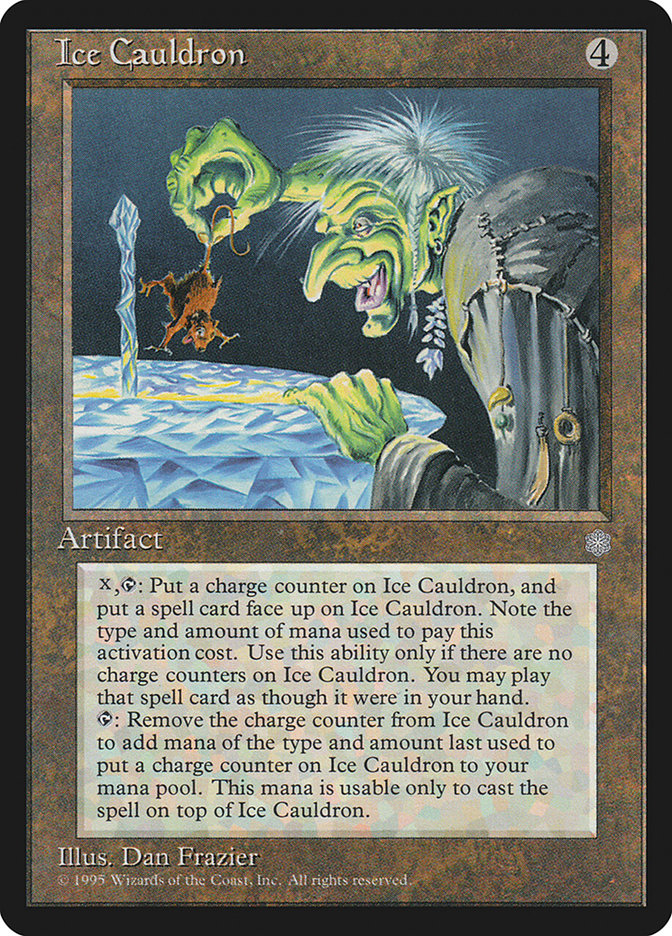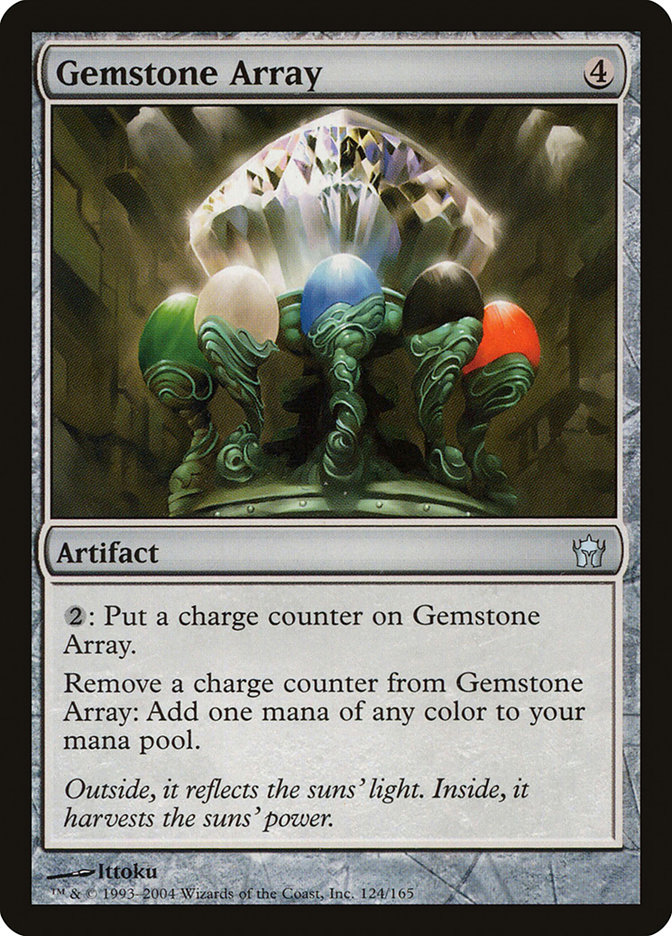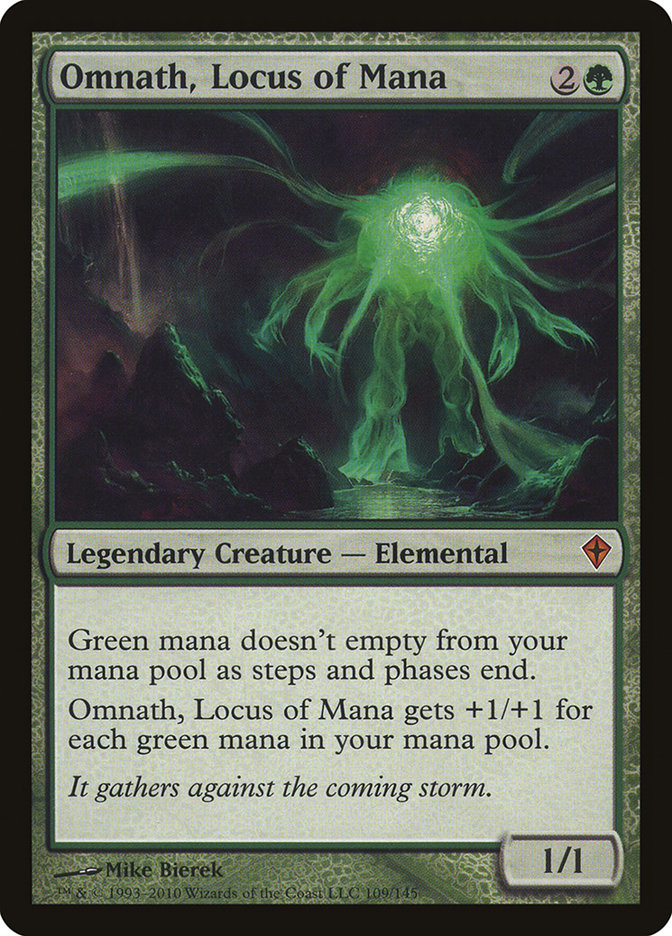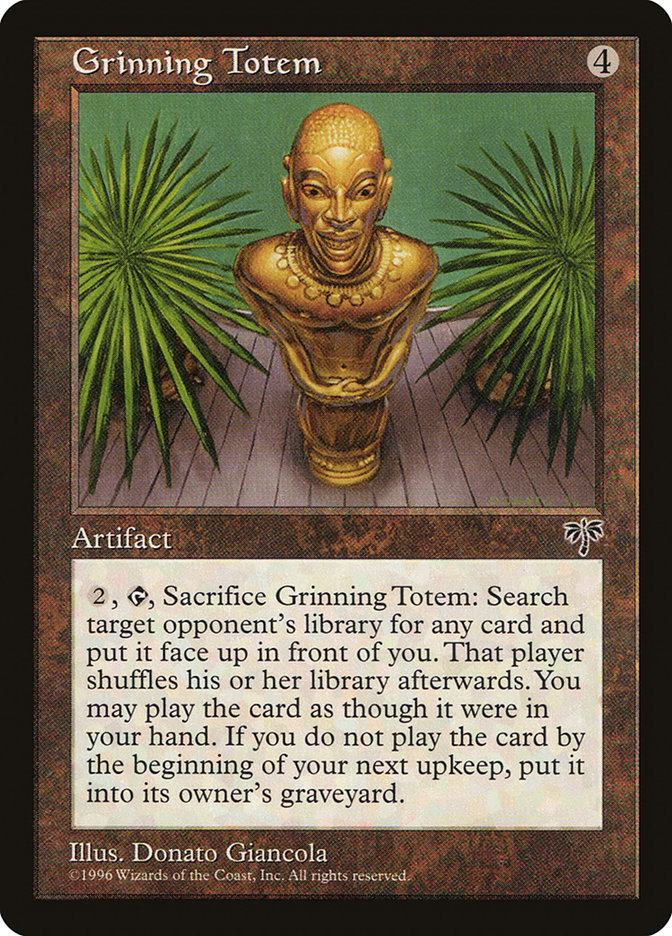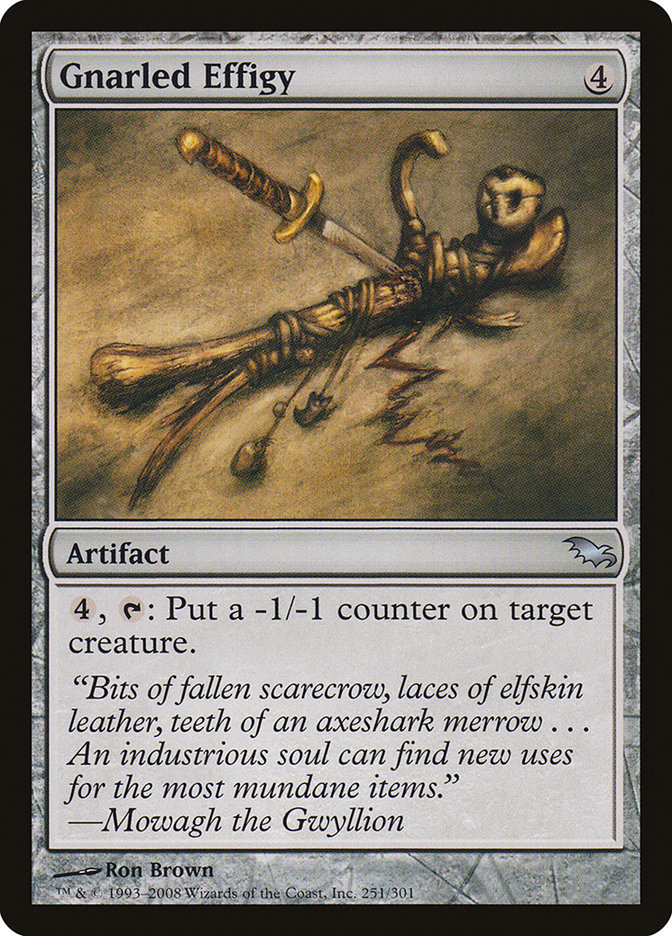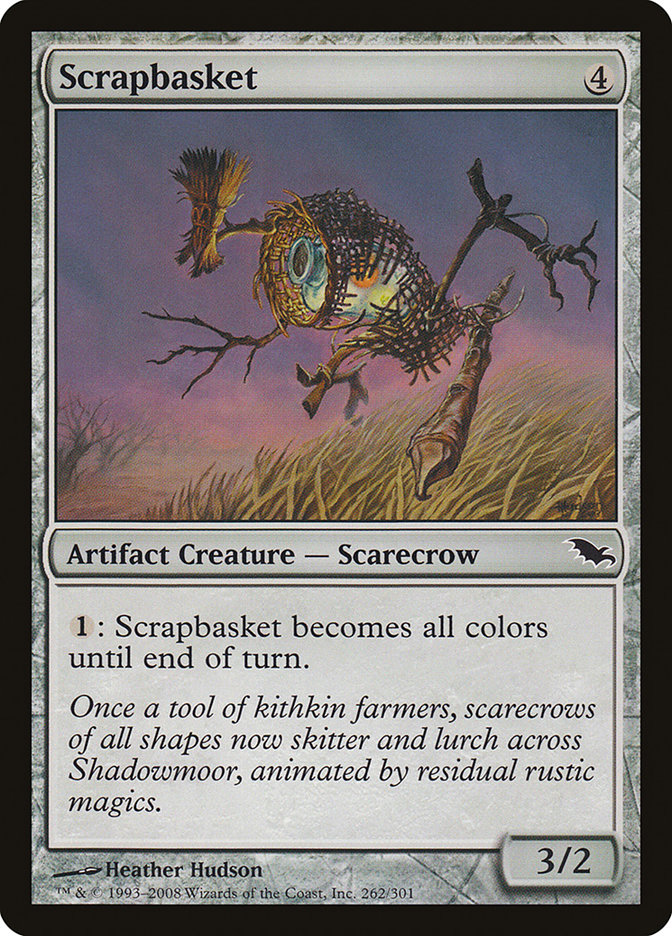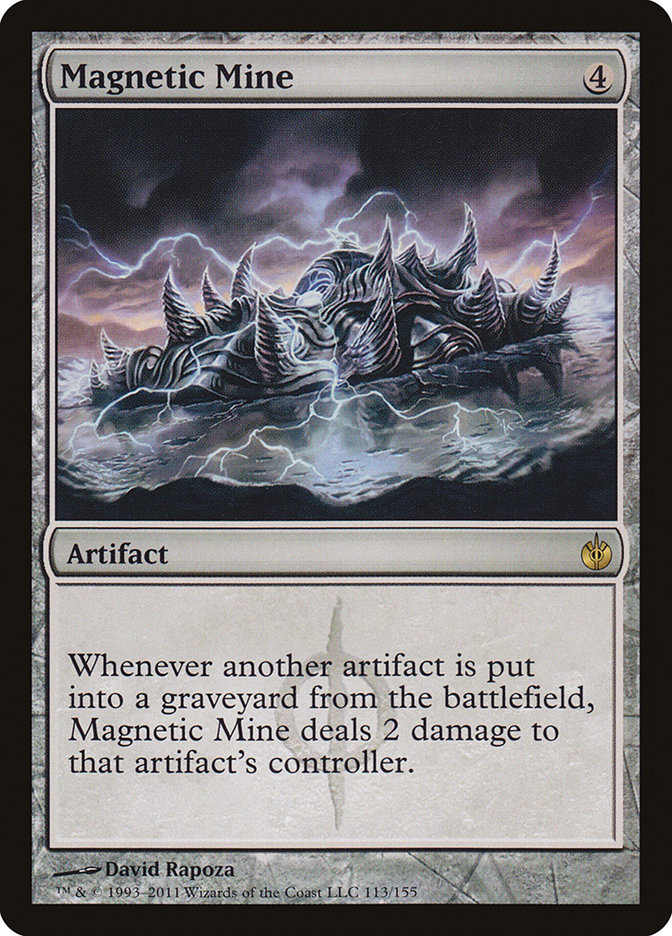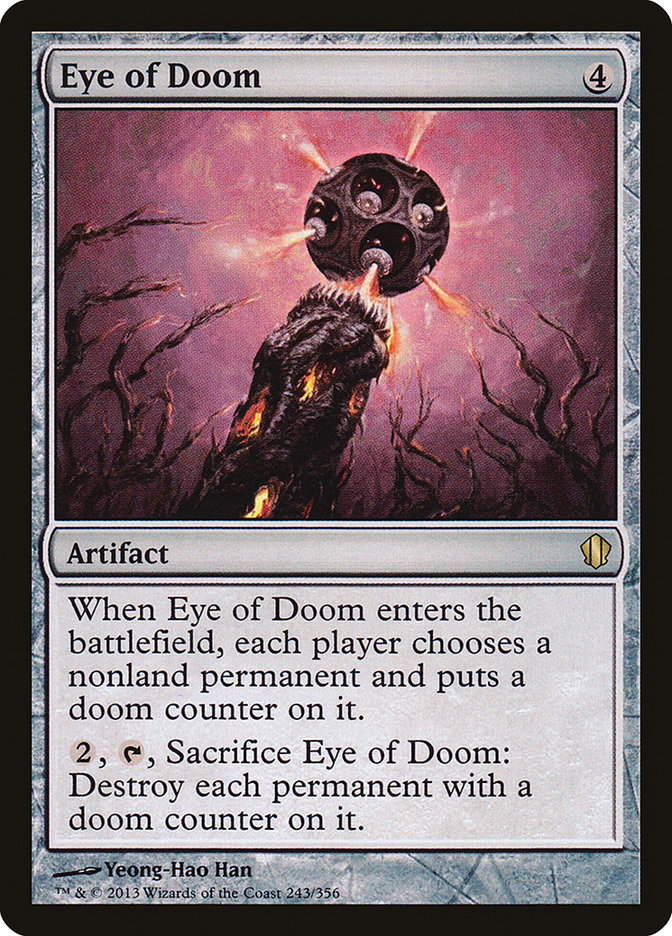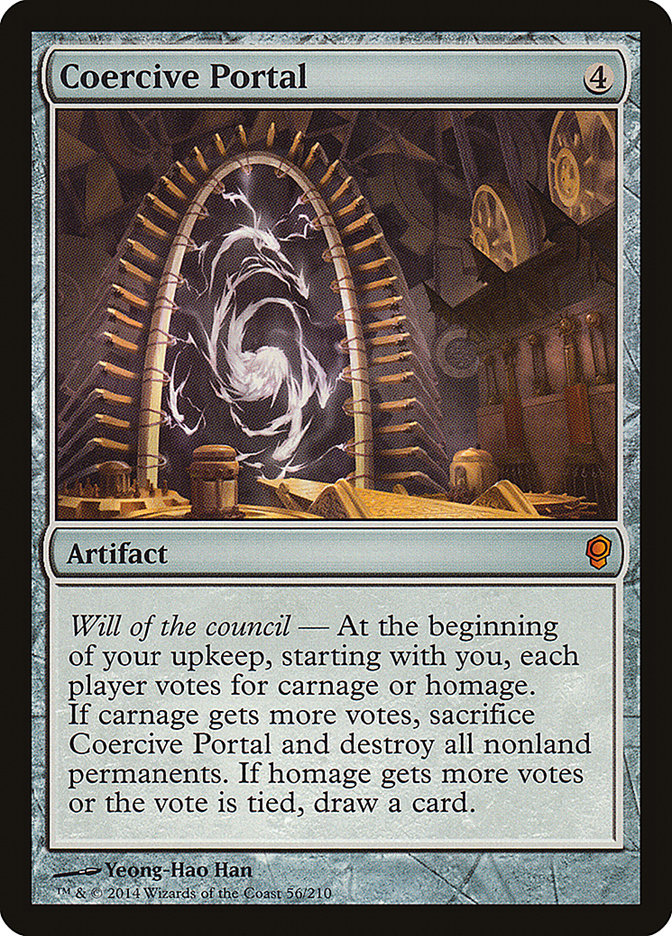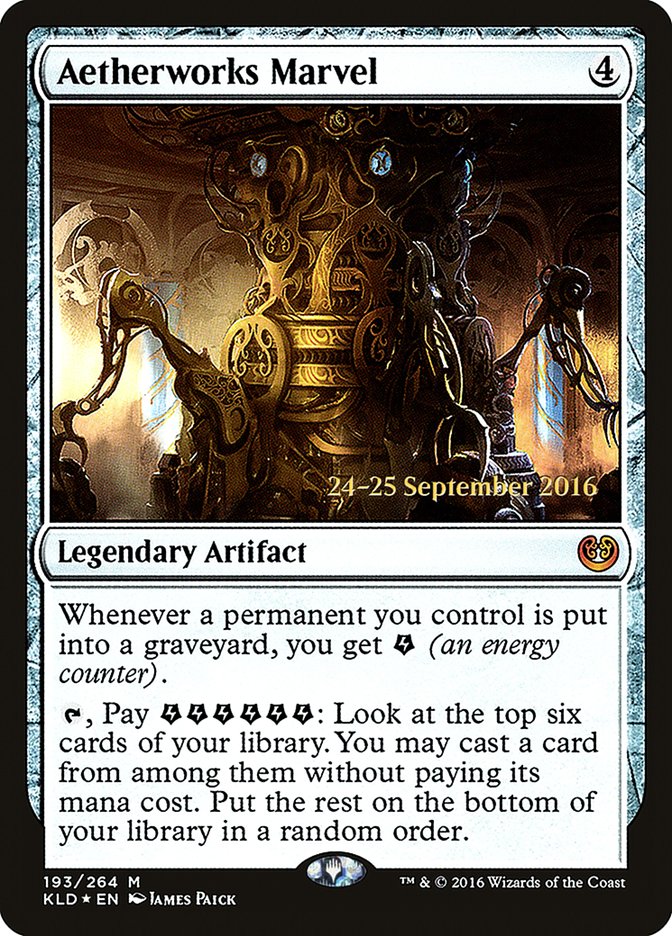Ice Cauldron MTG Card
| Card sets | Released in 2 setsSee all |
| Mana cost | |
| Converted mana cost | 4 |
| Rarity | Rare |
| Type | Artifact |
Text of card
X,oc T: Put a charge counter on Ice Cauldron, and put a spell card face up on Ice Cauldron. Note the type and amount of mana used to pay this activation cost. Use this ability only if there are no charge counters on Ice Cauldron. You may play that spell card as though it were in your hand. oc T: Remove the charge counter from Ice Cauldron to add mana of the type and amount last used to put a charge counter on Ice Cauldron to your mana pool. This mana is usable only to cast the spell on top of Ice Cauldron.
Cards like Ice Cauldron
Ice Cauldron invites intrigue and complexity to your Magic: The Gathering collection. This artifact card allows you to store mana and effectively delay the casting of a spell. In contrast, cards like Gemstone Array provide a more straightforward mana storage solution, although they lack the dynamic cast delaying feature. Gemstone Array’s simplicity in converting and storing mana for future phases can make it a more user-friendly choice for certain MTG play styles.
Another card worth comparing is Omnath, Locus of Mana, which also revolves around the principle of mana storage. Unlike Ice Cauldron, Omnath enables you to accrue unused green mana as +1/+1 counters, hence harmonizing storage with creature strength enhancement. While Omnath serves a dual purpose as a creature and mana reservoir, Ice Cauldron’s stand-alone storage and delayed casting can be distinctly leveraged in various strategic decks.
Ultimately, assessing Ice Cauldron within the context of similar MTG cards highlights its unique position. It offers a strategic depth that can significantly alter the tides of play for those who master its intricate mechanics, positioning it as a strategic albeit niche artifact in any Magic: The Gathering arsenal.
Cards similar to Ice Cauldron by color, type and mana cost
Card Pros
Card Advantage: Ice Cauldron stands out in deck strategies that revolve around card advantage. By exiling a card from your hand, you can essentially bank that card for future use while drawing into new options, ensuring you have a steady flow of resources every turn.
Resource Acceleration: This artifact also aids in resource acceleration. Players can store mana in Ice Cauldron over multiple turns, allowing them to execute high-impact plays earlier than usual. This can be particularly rewarding in formats where large spells can dramatically swing the game in your favor.
Instant Speed: The ability to invest mana at instant speed gives Ice Cauldron flexibility, keeping your opponents guessing. You can end your turn without fully tapping out, responding to threats or opportunities with the right timing. This can greatly affect the pacing of the game, giving you the upper hand.
Card Cons
Discard Requirement: One downside of the Ice Cauldron is that it necessitates the discard of a card once the charge ability is activated. This can set players back, particularly when their hand size is already reduced, and the strategic loss of a potentially useful card could shift the game’s momentum.
Specific Mana Cost: To extract value from Ice Cauldron, players must commit to specific mana costs twice; first to charge the artifact and later to cast the charged spell. This dual investment can be taxing on a player’s mana management, potentially disrupting their flow of play and lending itself to a more constricted play style.
Comparatively High Mana Cost: With an initial cast cost and the subsequent costs for charging and casting spells, Ice Cauldron demands a considerable mana investment compared to other mana storage or spell casting facilitators. In a game where efficiency can turn the tide, the steep mana relay onto Ice Cauldron may deter players from incorporating it into their deck over more cost-effective alternatives.
Reasons to Include in Your Collection
Versatility: Ice Cauldron is unique in that it allows players to bank mana across turns, making it a card that can be slotted into numerous decks that may require advanced resource planning or mana storage for casting costly spells.
Combo Potential: The ability to store a spell and its mana can set up powerful plays, enabling intricate combos with cards that interact with artifacts, or that capitalize on unspent mana.
Meta-Relevance: With ever-shifting metagames, Ice Cauldron can present an unexpected element that can adapt to various situations, proving useful in environments where longer, more complex games are typical.
How to beat
Overcoming the challenge that Ice Cauldron presents in a game of Magic: The Gathering can be quite the puzzle, as this artifact allows players to store mana and essentially split the cost of a card over two turns. To tackle this strategy, it’s critical to remain adaptable and consider options such as targeted removal, countermagic, or artifact disruption tools. Disenchant and Nature’s Claim are examples of spells that can remove Ice Cauldron from the battlefield, bypassing its utility and preserving your tempo advantage.
Counterplay also resides in the realm of hand disruption. Cards like Thoughtseize and Duress can preemptively remove problematic cards your opponent may be setting up with Ice Cauldron, thereby nullifying their planned advantage. Additionally, maintaining pressure through fast-paced aggression can limit the impact of Ice Cauldron, as your opponent may not have the luxury of time to take full advantage of its mana-investment mechanism.
In essence, while Ice Cauldron can provide considerable leverage in MTG, engaging with an informed strategy and utilizing precise card choices will give you the upper hand, ensuring your deck’s resilience and adaptive capability to dismantle your opponent’s game plan.
Where to buy
If you're looking to purchase Ice Cauldron MTG card by a specific set like Ice Age and Masters Edition IV, there are several reliable options to consider. One of the primary sources is your local game store, where you can often find booster packs, individual cards, and preconstructed decks from current and some past sets. They often offer the added benefit of a community where you can trade with other players.
For a broader inventory, particularly of older sets, online marketplaces like TCGPlayer, Card Kingdom and Card Market offer extensive selections and allow you to search for cards from specific sets. Larger e-commerce platforms like eBay and Amazon also have listings from various sellers, which can be a good place to look for sealed product and rare finds.
Additionally, Magic’s official site often has a store locator and retailer lists for finding Wizards of the Coast licensed products. Remember to check for authenticity and the condition of the cards when purchasing, especially from individual sellers on larger marketplaces.
Below is a list of some store websites where you can buy the Ice Cauldron and other MTG cards:
 BUY NOW
BUY NOW BurnMana is an official partner of TCGPlayer
- eBay
- Card Kingdom
- Card Market
- Star City Games
- CoolStuffInc
- MTG Mint Card
- Hareruya
- Troll and Toad
- ABU Games
- Card Hoarder Magic Online
- MTGO Traders Magic Online
See MTG Products
Printings
The Ice Cauldron Magic the Gathering card was released in 2 different sets between 1995-06-03 and 2011-01-10. Illustrated by Dan Frazier.
| # | Released | Name | Code | Symbol | Number | Frame | Layout | Border | Artist |
|---|---|---|---|---|---|---|---|---|---|
| 1 | 1995-06-03 | Ice Age | ICE | 321 | 1993 | Normal | Black | Dan Frazier | |
| 2 | 2011-01-10 | Masters Edition IV | ME4 | 206 | 1997 | Normal | Black | Dan Frazier |
Legalities
Magic the Gathering formats where Ice Cauldron has restrictions
| Format | Legality |
|---|---|
| Commander | Legal |
| Legacy | Legal |
| Oathbreaker | Legal |
| Premodern | Legal |
| Vintage | Legal |
| Duel | Legal |
| Predh | Legal |
| Penny | Legal |
Rules and information
The reference guide for Magic: The Gathering Ice Cauldron card rulings provides official rulings, any errata issued, as well as a record of all the functional modifications that have occurred.
| Date | Text |
|---|---|
| 2004-10-04 | Cards which are not actually in your hand can’t be exiled by the Ice Cauldron. |
| 2004-10-04 | If multiple cards are exiled by the Cauldron, any one of them can be cast. |
| 2004-10-04 | If multiple cards are exiled by the Cauldron, the mana can only be used for the card that was exiled by the Cauldron when the most recent charge counter was put there. |
| 2004-10-04 | If the Cauldron leaves the battlefield, you can still cast any cards it exiled as though they were in your hand. You just no longer have access to the mana you charged the Cauldron with. |
| 2004-10-04 | If the ability to exile a card with the Cauldron is countered, you do not lose the card since it is exiled during resolution. |
| 2004-10-04 | It is possible to have more than one card exiled by the Cauldron. You can tap the Cauldron to remove the charge counter and whatever mana is on it but leave the card there. Later, you can tap it and put in mana and a charge counter to add another card. |
| 2004-10-04 | Produces mana of the last type used to put a counter on itself, not via any other charge counters. |
| 2004-10-04 | Tapping the Cauldron for the mana is a mana ability. |
| 2004-10-04 | The Cauldron counts only mana spent on it. It doesn’t see the value of X, so isn’t affected by cost reductions. Thus, if you spent on X, you get later even if X was 6. |
| 2004-10-04 | The mana can be used to pay for additional costs to cast the spell. |
| 2004-10-04 | The mana put in the Cauldron can only be used to cast the given spell, but you can add additional mana to a spell. This means you can pay part of the cost on one turn and the rest of it on the next turn. |
| 2004-10-04 | X can be zero. This places a zero mana counter on the Cauldron. |
| 2004-10-04 | You can only cast the spell when you could legally cast it normally. So no casting a sorcery on your opponent’s turn. |
| 2004-10-04 | You do not have to use any mana from the Cauldron when casting the spell if you don’t want to. You don’t even have to tap the Cauldron and draw the mana, you can just cast the spell using mana from somewhere else. |
